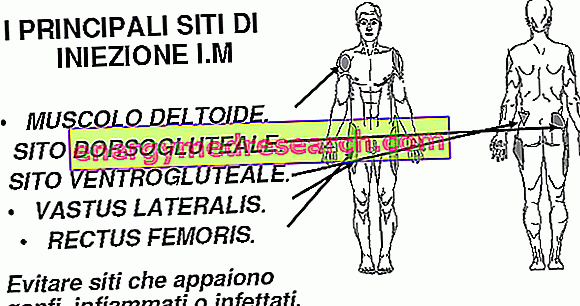Generality
The palate is the upper wall of the oral cavity (the so-called roof of the mouth) and, at the same time, the floor of the nasal cavities.

Covered with mucosa, the palate is distinguishable in two regions: the hard palate and the soft palate.
The hard palate is characterized by a bone and periosteal component; the soft palate, on the other hand, is characterized by a muscular component, which includes 5 muscles.
From the functional point of view, the palate offers a fundamental contribution to three processes: chewing, swallowing and phonation (ie the emission of words).
What is the Palate?
The palate is the upper wall of the oral cavity and, at the same time, the base of the nasal cavities.
The palate, therefore, responds perfectly to the anatomical definition, often used to describe it, of " roof of the mouth and floor of the nasal cavities ".
Anatomy
The palate includes bones, muscle tissue and mucous tissue .
According to the most traditional of anatomical visions, the palate can be divided into two regions: one anterior, called the hard palate, and one posterior, called the soft palate .
Although hard to distinguish from sight, the hard palate and the soft palate are quite different from each other; in fact, under the mucous lining common to both, the hard palate has a bone component, which in the soft palate is completely absent and replaced, in a certain sense, by a component of muscular nature.
Hard palate

The hard palate is, substantially, a bone formation with a double coating: a more intimate covering, corresponding to a periosteum layer, and a more external covering, corresponding to a mucous layer.
The hard palate constitutes 2/3 of the palate and, by virtue of the position it occupies, constitutes the anatomical element of separation between the nasal cavities and the oral cavity.
To remember!
The hard palate is the anterior portion of the palate.
MUCOSA OF THE HARD PALATE
Closely related to the periosteum layer that precedes it, the mucosa of the hard palate is not the same; in fact, it is equivalent to a respiratory mucosa, from the part that looks towards the nasal cavities (upper mucosa of the hard palate), while it corresponds to an oral mucosa, from the part that faces towards the oral cavity (lower mucosa of the hard palate).
For obvious reasons, in the descriptions of the palate, the mucosa of the hard palate of greatest interest is the lower one.
BONE COMPONENT
The bone component of the hard palate results from the contribution of:
- The palatine processes of the two maxillary bones e
- The horizontal laminae of the two palatine bones .
Did you know that ...
The maxillary bone and the palatine bone are two equal bones of the skull ; more precisely, they are two of the 14 bony elements that make up the skeleton of the splanchocranium, bones the subdivision of the skull, of the two recognized (the other is the neurocranium), which constitutes the skeleton of the face.
COATING WITH MUCO-PERIOSTAL: RAGHE PALATINE AND RAFE PALATINO
Near the maxillary arch, the union between the mucosal lining and the periosteal lining of the palate (muco-periosteal lining of the hard palate) forms, with transverse orientation, irregular-looking ridges, called palatine wrinkles (or palatine ridges ), whose task is to facilitate the movement of food in the direction of the pharyngolaryngeal complex.
Moreover, in the middle position (ie in the middle) and just before the border with the soft palate, the same muco-periosteal covering of the hard palate gives life to a line in relief with a longitudinal sense, which is called rafe palatino .
Did you know that ...
The palatine wrinkles are those reliefs that can be easily felt with the tongue, if one passes this a little before the upper dental arch.
RELATIONSHIPS
The hard palate borders on:
- The alveolar arch of the maxilla, at the level of the antero-lateral margin (ie on the front and laterally);
- The soft palate, at the level of the posterior margin (ie back);
- The nasal cavities, above;
- The oral cavity, inferiorly.
What is the alveolar arch of the jaw?
The alveolar arch of the jaw is the part of this bone in which the grooves for the roots of the teeth reside.
BLOOD CIRCULATION
The influx of oxygenated blood to the hard palate is reserved for the major palatine artery, a branch of the maxillary artery .
On the other hand, a group of veins of the so-called pterygoid venous plexus deal with the drainage from the soft palate of oxygen-poor blood.
INNERVATION
The innervation of the hard palate belongs to the major palatine nerve and to the nasopalatine nerve (or spheno-palatine nerve ); the major palatine nerve and the nasopalatine nerve are two branches of the so - called pterigo-palatine ganglion, which is the nerve formation that joins the fibers of the maxillary nerve and the pterygoid canal nerve .
The innervation of the hard palate is exclusively sensitive.
Did you know that ...
The maxillary nerve is one of the three main branches of the trigeminal nerve, ie the V cranial nerve .
LYMPHATIC CIRCULATION
At the level of the hard palate, the circulating lymph drains, in large part, into the deeper upper cervical lymph nodes and, to a lesser extent, into the retropharyngeal lymph nodes .
Upper deep cervical lymph nodes and retropharyngeal lymph nodes belong to the large family of so-called lymph nodes in the neck .
Soft palate
Representing the one missing third of the palate, the soft palate is a muscular formation, covered with oral mucosa, which thanks to the rich component of muscles is endowed with a marked mobility.

According to the most classical anatomical descriptions of the soft palate, two characteristic portions can be identified on the latter: the so-called horizontal portion and the so-called vertical portion .
The horizontal portion of the soft palate is the natural continuation of the hard palate; compared to the latter, obviously, it lacks the bone component and the periosteum.
The vertical portion of the soft palate, on the other hand, is a sort of prominence oriented towards the floor of the oral cavity, concave, in the initial part, and convex, in the terminal part, which culminates with an anatomical element surely known to most people: the uvula .
It is important to note that the posterior margin of the soft palate is, so to speak, free, since, behind it, there is the empty space that connects the nasal cavities to the oral cavity ( rhinopharynx ).
To remember!
The soft palate is the back of the palate.
MUSCLES OF THE SOFT PALATE
The soft palate includes 5 muscles in all: the tensor muscle of the palatine veil, the palatoglossus muscle, the palato-pharyngeal muscle, the levator palatalis vein muscle and the uvula muscle .
- Tensor muscle of the palatal veil.
Origin: on the medial pterygoid plate of the sphenoid bone (sphenoid fossa);
Terminal insertion: on the palatal aponeurosis ;
Innervation: it is up to the medial pterygoid nerve (branch of the maxillary nerve);
Function: provides the tension of the soft palate, a fundamental movement for swallowing.
- Palatoglossus muscle.
Origin: on the palatal aponeurosis;
Terminal insertion: on the tongue ;
Innervation: it is up to the pharyngeal plexus (derivation of the vagus nerve );
Function: allows the rear part of the tongue to be raised and moved backwards to ensure optimal swallowing.
- Palate-pharyngeal muscle.
Origin: on the palatal aponeurosis;
Terminal insertion: on the upper edge of the thyroid cartilage ;
Innervation: it is up to the pharyngeal plexus (derivation of the vagus nerve);
Function: serves to "pull" the pharynx and larynx upwards, so as to guarantee breathing.
- Elevating muscle of the palatal veil.
Origin: on the temporal bone and on the Eustachian tube ;
Terminal insertion: on the palatal aponeurosis;
Innervation: it is up to the pharyngeal plexus (derivation of the vagus nerve);
Function: provides for the elevation of the soft palate, an indispensable movement for swallowing.
- Uvula muscle.
Origin: at the rear edge of the hard palate;
Terminal insertion: on the mucous membrane of the uvula;
Innervation: it is up to the pharyngeal plexus (derivation of the vagus nerve);
Function: provides for the elevation of the uvula.
What is the palatal aponeurosis?
Attached to the posterior edge of the hard palate, the palatal aponeurosis is a fibrous sheath of the palate, whose main task is to support the muscles of the soft palate.
RELATIONSHIPS
The soft palate borders on:
- The hard palate, anteriorly;
- The nasopharynx, posteriorly;
- The oropharynx, below;
- The nasal cavities and, in a sense, also the entrance of the Eustachian tube, superiorly.
BLOOD CIRCULATION
To deal with the influx of oxygenated blood to the soft palate are the minor palatine arteries (branches of the descending palatine artery ) and the ascending palatine artery (branch of the facial artery ).
The drainage from the soft palate of oxygen-poor blood, on the other hand, belongs to a group of veins that join the already known pterygoid venous plexus.
INNERVATION
The innervation of the soft palate includes both fibers of a sensitive nature (sensory innervation) and motor fibers (motor innervation).
The aforementioned nerves include the palatine maggiore and naso-palatino (or spheno-palatine) and the palatine nerve minor .
Like the palatine maggiore and naso-palatino nerves, the palatine minor nerve also comes from the pterigo-palatine ganglion, which is the nerve formation that groups the fibers of the maxillary nerve and the pterygoid canal nerve.
The motor innervation of the soft palate, instead, is up to the nerves of the pterygoid plexus (which, as readers will remember, reach the levator muscles of the palatine, palatoglossus, palate-pharyngeal vein and the uvula muscle) and to the pterygoid nerve medial (which, as previously stated, reaches the tensor muscle of the palatal veil).
Two curiosities about the uvula
- The sensitive innervation present on the soft palate causes the touch of the latter, in particular on the uvula, to trigger the vomiting stimulus.
- Recent studies have shown that the uvula has no role in the phenomenon of snoring .
Function
The palate has a fundamental role in the processes of chewing food, swallowing food and phonation (ie issuing the word).
Hard Palate: details on its function
The hard palate contributes to chewing and, during the speech, to the emission of palatal consonants .
CHEWING

During chewing, the hard palate causes the food to move towards the pharynx-larynx complex, a complex after which the esophagus begins.
To make it capable of such an action are the known palatine wrinkles present on the initial tract, just after the alveolar arch of the jaw.
PHONATION
As far as the dynamics of discourse are concerned, the hard palate offers support to the language, so that it is possible to emit sounds corresponding to "c", "n" or "l" and a whole series of sounds that they are not part of the Italian alphabet, but are present in many languages of the world.
Did you know that ...
Mammals (including humans, if there is no special surgical treatment) that are born with a defective hard palate die shortly after birth, as they are unable to suckle breast milk.
Soft palate
The soft palate allows correct swallowing and, during the speech, guarantees the emission of the velar consonants .
Swallowing
During swallowing, the soft palate moves in such a way as to induce the closure of the passage to the nose (rhinopharynx) and the closure of the airways. This prevents the food (which is now called the food bolus ) from taking the path that leads to the nasal cavities and the path that leads to the trachea, and, at the same time, allows it to undertake a single path, the most appropriate one, which is the way to the esophagus .
PHONATION
As for speech dynamics, the soft palate allows the generation of sounds corresponding to the letters "k", "g", "x" or "y".
Curiosity
During sneezing, the soft palate has the task of diverting part of the excretion towards the mouth.
diseases
The palate can be subject to various medical conditions, including:
- The cleft palate, which can affect both the soft palate and the hard palate;
- The palatal abscess, which is a specific condition of the hard palate;
- Herpangina and pemphigus vulgaris, which are two specific disorders of the soft palate.
Among these pathologies of the palate, the surely the best known is the cleft palate.
Palatoschisi: what is it?

Belonging to the pathological category of oro-facial clefts, cleft palate is a congenital malformation, which is characterized by the presence of a fissure (or cracking) at the palate level.
Very often associated with cleft lip (or cleft lip ), cleft palate can affect the hard palate and / or the soft palate.
CAUSES
Cleft palate is due to an incorrect or incomplete palate closure during fetal development.
Currently, the causes affecting palate closure, inducing cleft palate, are unknown.
On the subject, however, there are various theories; among these, the most reliable claims that cleft palate would be the result of a combination of genetic factors and environmental factors .
Did you know that ...
In humans, the palate is formed between the sixth and ninth week of fetal development.
SYMPTOMS
The presence of cleft palate can have several consequences; in fact, it can involve:
- Difficulty sucking mother's milk and eating;
- Difficulty speaking;
- Teeth problems;
- Predisposition to otitis of the middle ear.
DIAGNOSIS
Since the malformation on the palate is difficult to find before birth, the diagnosis of cleft palate is generally made at birth, through an objective examination .
THERAPY
Today, fortunately, cleft palate is a curable condition with excellent results; in fact, an ad hoc surgical procedure exists, which allows to effectively close the anomalous opening on the palate.



